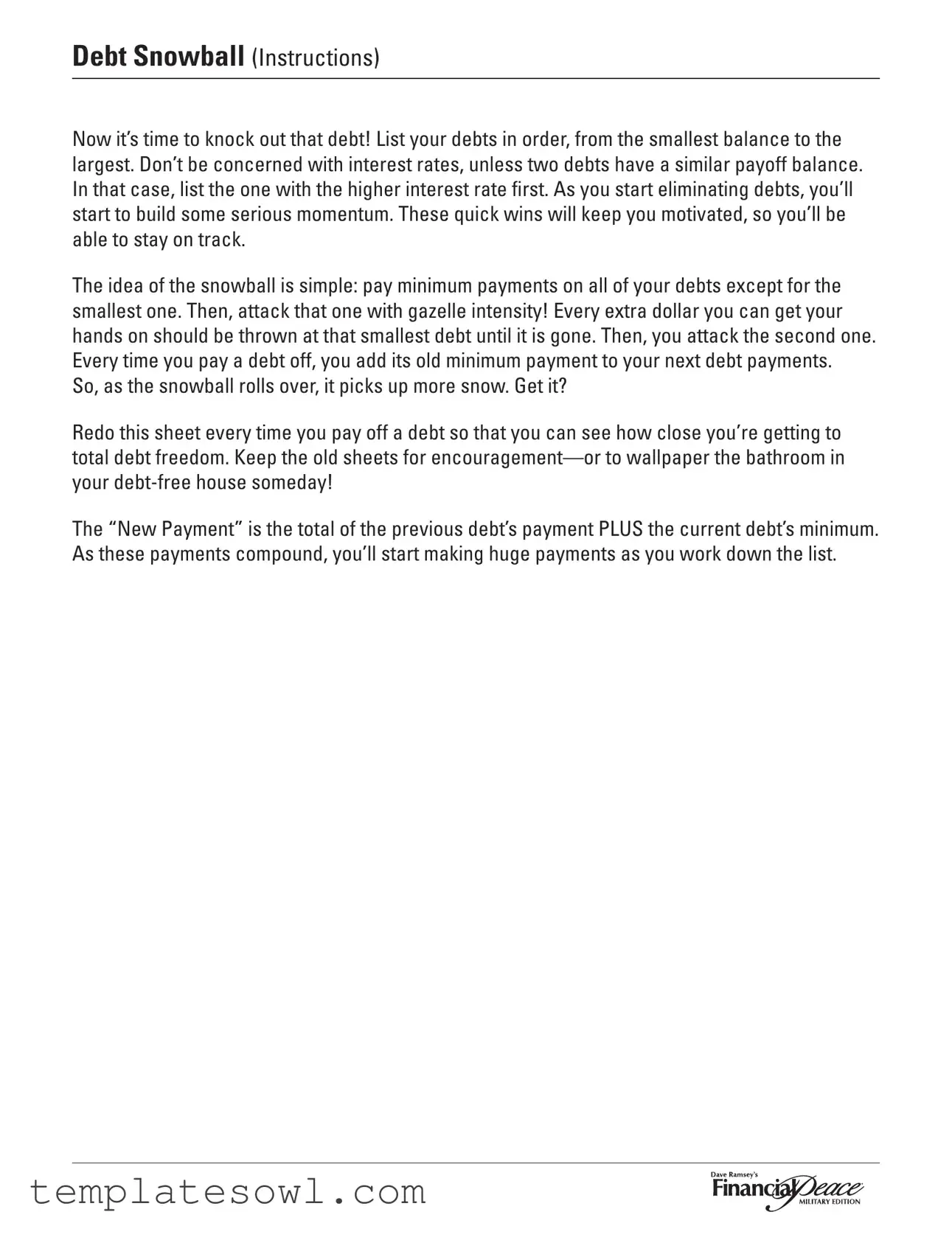What is the Debt Snowball method?
The Debt Snowball method is a strategy designed to help individuals pay off their debts systematically. By listing debts from the smallest balance to the largest, this approach allows people to tackle smaller debts first, creating a sense of accomplishment. The main idea is to make minimum payments on all debts except the smallest, which receives any extra funds available until it is fully paid off. Once a debt is cleared, the combined payment is applied to the next smallest debt.
How do I start the Debt Snowball process?
To begin, gather all your debt information, including balances and minimum payments. Write down each debt in order from the smallest balance to the largest. Focus on this list rather than interest rates initially. Having this clear outline will give you a path forward. Begin making minimum payments on everything except the smallest debt, which should receive your additional funds.
Why does the Debt Snowball method emphasize paying off smaller debts first?
Focusing on smaller debts first creates quick wins that can boost your motivation. The psychological benefit of paying off a debt can be significant. As you eliminate smaller debts, you gain confidence and momentum, which is crucial for maintaining discipline as you tackle larger sums.
What do I do if two smaller debts have similar balances?
If two debts have similar balances, prioritize the one with the higher interest rate. This will minimize the amount you pay in interest over time. Although the Debt Snowball method primarily focuses on balance, considering interest rates in this scenario can be beneficial for overall financial health.
How do I calculate the 'New Payment' for my debts?
The 'New Payment' is calculated by adding the minimum payment of the next targeted debt to the total payment of the previous debt you just paid off. For example, if you were paying $200 on your now-paid-off debt and the minimum payment for your next debt is $150, your 'New Payment' will be $350 for that debt moving forward.
How often should I redo the Debt Snowball form?
It's recommended to update your Debt Snowball form every time you pay off a debt. This keeps the process fresh and allows you to visualize your progress as you move towards becoming debt-free. Regular updates provide tangible evidence of your hard work and determination.
Is it okay to use credit cards while following the Debt Snowball method?
While following the Debt Snowball method, it’s advisable to limit new credit card usage; ideally, avoid using credit cards altogether. Continuing to accumulate debt can undermine your efforts. You should aim for a strict budget to help maintain focus on paying off existing debts.
What happens after I pay off all my debts?
After paying off all your debts, you gain financial freedom and can redirect your money towards savings, investments, and building an emergency fund. This sense of liberation often leads to better financial habits and the ability to plan for future goals, such as purchasing a home or retirement.
Can I customize the Debt Snowball form?
Absolutely! The Debt Snowball form can be modified to suit personal preferences. Adjusting the layout, adding more debts, or even including additional notes is perfectly acceptable. The important part is that it helps you stay organized and motivated on your journey to manage and eliminate your debt.
How does the Debt Snowball method affect my credit score?
Using the Debt Snowball method can positively impact your credit score over time. As you consistently make payments and reduce your overall debt, your credit utilization ratio decreases. Successfully paying off debts on time also contributes to a positive payment history, which is a significant factor in credit scoring.


